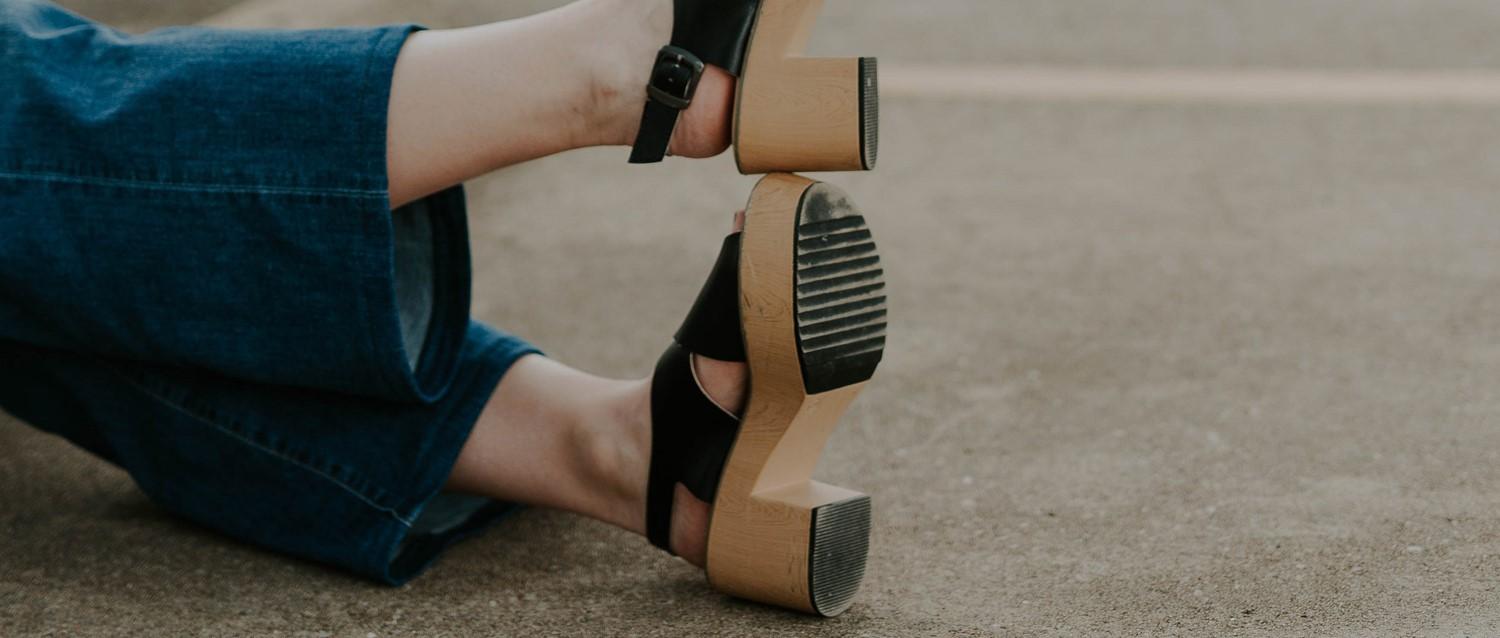
What are lipoedema and lymphoedema?
Peer reviewed by Dr Hayley Willacy, FRCGP Last updated by Dr Sarah Jarvis MBE, FRCGPLast updated 11 Sept 2017
Meets Patient’s editorial guidelines
- DownloadDownload
- Share
- Language
- Discussion
It’s all too common to have swollen ankles towards the end of a long day – but what if the swelling doesn’t go down? What if it’s your arms that are affected too? Lymphoedema and the rarer lipoedema, could just be to blame. If you push your thumb into an area of lymphoedema, you’ll usually get a dent in the skin. This doesn’t happen with lipoedema.
In this article:
Continue reading below
What causes lymphoedema?
Your lymphatic system is like a miniature railway – a network of lymph ducts connected at ‘stations’ called lymph nodes or glands. It plays a major part in transporting white blood cells round your body to fight infection – the swollen glands you get in your neck when you have a sore throat are lymph nodes full of white blood cells. It also carries excess fluid away from your body tissues.
‘Oedema’ is the medical term for some kinds of swelling. Lymphoedema is swelling, often in your leg(s) or arm(s) caused by abnormal drainage in your lymphatic system. To being with, the swelling may settle overnight but as time goes on, it becomes more constant, especially without treatment.
There are two main kinds of lymphoedema. ‘Primary’ lymphoedema isn’t triggered by anything, and is caused by faulty genes which mean your lymph system doesn’t develop properly. ‘Secondary’ lymphoedema is much more common – it’s caused by blockage of, or damage to, your lymph channels. Removing lymph nodes during cancer surgery is a classic cause. However, infection (like cellulitis), radiotherapy, deep vein thrombosis, lack of movement or injury to your lymph channels can also be to blame.
Lymphoedema can cause uncomfortable swelling and heaviness in the limb that’s affected, as well as restriction of movement. But the main complication is skin infection called cellulitis. Red, hot, swollen, painful patches of skin are often accompanied by fever and feeling generally unwell. See your doctor for antibiotics if this happens to you.
What are the treatment options for
Continue reading below
lymphoedema?
Although lymphoedema can’t be ‘cured’, wearing compression garments and keeping your weight down can reduce the swelling significantly. Taking special care of your skin is very important to reduce the risk of infection. If your feet are affected, regular visits to a podiatrist will help. If it’s one arm, avoiding tight jewellery, blood pressure readings or injections on that side are all important.
As a general rule, tips to avoid infection if you have lymphoedema include:
Properly fitted shoes that don’t rub if you have lymphoedema of the feet
Using insect repellents to avoid insect bites
Regular moisturising
Avoiding very hot baths (and sauna and steam baths) and
Using an electric razor to avoid razor cuts.
What causes lipoedema?
Lipoedema is an abnormal build-up of fat cells, and it’s almost exclusively a female condition. Unlike lymphoedema, it isn’t caused by surgery or infection – it often runs in families and tends to develop when your hormone levels are fluctuating (puberty, pregnancy, menopause). It most commonly affects the whole of both legs and less often arms (but not feet or hands). As well as being swollen, your legs may feel achy, and you can get small broken blood vessels or bruising.
We tend to think of fat cells being associated with being overweight. In fact, while lipoedema is made worse by carrying excess weight, many women with lipoedema are within the normal weight range.
Continue reading below
What are the treatments for lipoedema?
Unlike lymphoedema, losing weight makes little difference to lipoedema. Neither do water tablets or keeping your legs raised – both of which can be very helpful in other forms of oedema.
There are two main groups of treatment for lipoedema, which can be helpful in lymphoedema too. The first is non-surgical. Compression garments don’t affect the fatty tissue much, but they can reduce swelling and discomfort. Low impact exercise like swimming and massage can also help. However, the only way to get rid of the fat cells that cause lipoedema is a form of liposuction. Unfortunately, you may need several operations and it’s not usually available on the NHS.
It is important to see your doctor if you think you might have lipoedema or lymphoedema. Without treatment, people with lipoedema can go on to develop lymphoedema. Lymphoedema and lipoedema can be distressing conditions, and being affected can affect your mental wellbeing. While neither condition can be cured, there is support out there that can make a big difference.
With thanks to ‘My Weekly’ magazine where this article was originally published.
Patient picks for Swelling

Signs and symptoms
Water retention causes, symptoms, and treatments
You've probably read that the human body contains around 70% water, and we all know that drinking enough of the good stuff is great for our health. But if your body is retaining excess water or fluid, it can result in uncomfortable symptoms and may be a sign of an underlying medical condition.
by Gillian Harvey

Signs and symptoms
Natural remedies to help prevent water retention
Water retention can happen for several reasons. Though some people are more susceptible to it, anyone can experience this condition - no matter your age or gender. We examine the common signs of water retention, its causes, and ways to help prevent it.
by Victoria Raw
Continue reading below
Article history
The information on this page is peer reviewed by qualified clinicians.
11 Sept 2017 | Latest version

Ask, share, connect.
Browse discussions, ask questions, and share experiences across hundreds of health topics.

Feeling unwell?
Assess your symptoms online for free
Sign up to the Patient newsletter
Your weekly dose of clear, trustworthy health advice - written to help you feel informed, confident and in control.
By subscribing you accept our Privacy Policy. You can unsubscribe at any time. We never sell your data.